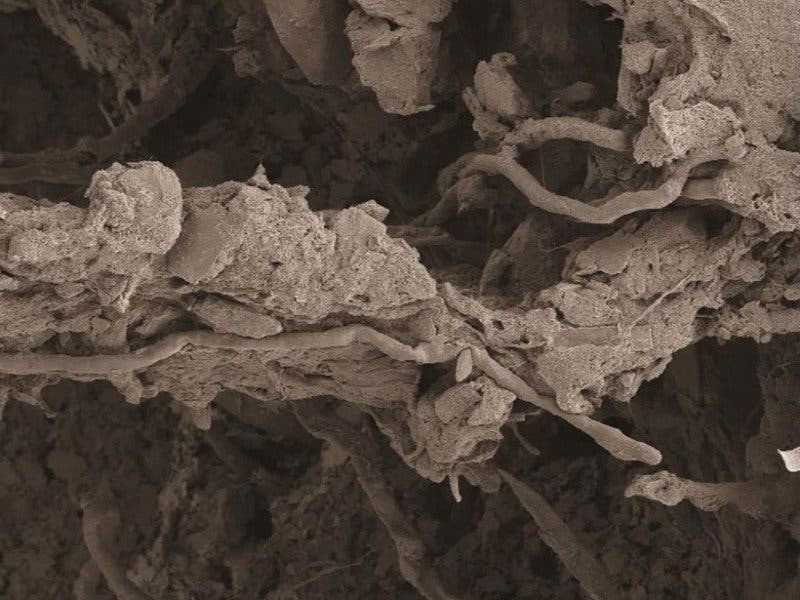Fungi were thought to have a minimal impact on minerals’ bioweathering but recent study suggests that fungi are a lot more aggressive than they were given credit. They use acid to access precious nutrients like iron and burrow deep into rocks using mechanical force to further their reach.

Researchers at George Washington University collected a fungus called Talaromyces flavus from a mine in Donghai, China. They then brought the fungus home and let it munch on a mineral called lizardite in a controlled lab setting. Previously, researchers who studied mineral degradation at the hand of fungal or microbial activity would mix the organisms with crushed minerals. In our case, T. flavus was allowed to eat the mineral whole for four days, mimicking a fungus-mineral interface interaction found in the real world.
After those four days, the team led by Henry Teng, a geochemist at George Washington University, washed the lizardite mineral and inspected the marks left by T. flavus. The results were pretty astonishing: many long, thin channels and small, round pits — the marking of a fungus feast — littered the mineral’s surface.

The methods of attack were also explained. First, the fungus releases spores that drop the pH by a factor of ten. This highly acidic environment dissolves the mineral, forming a soup which the fungus can easily ingest, but not before releasing a chemical called siderophore which facilitates iron intake. Once the iron at the surface of the mineral is depleted, T. flavus extends fillaments called hyphae which burrow inside, leaving behind channels stretching 200–2000 nanometers.
Intriguingly, the mineral had become amorphous in some parts where it should have had an orderly crystalline structure. This observation suggests the fungus used mechanical force to destroy the mineral, in addition to chemical forces.
Another experiment was set up, this time the lizardite was crushed in mixed in a solution with the fungus. Far less of the mineral was degraded in this suspended setting, suggesting interface interaction is a lot more powerful. Teng and colleagues claim that the fungus is responsible for forty to fifty percent of the total bioweathering of the mineral, compared to only one percent previously thought.
“Compared to bacteria, fungi are overlooked, understudied, and very few studies [looked] at these interfaces between fungi and mineral,” said Steeve Bonneville , a biogeochemist at the Free University of Brussels in Belgium who was not involved in the paper, which he called “a very solid study.” The new research provides evidence that “fungi can be a major player in mineral alteration and more generally in biogeochemical cycles,” Bonneville said.
The researchers only studied one species of fungus though, and some traits may be unique to T. flavus. The study‘s results might motivate others to investigate this interaction using other species.
Why is all this important? Apart from understanding how fungi and minerals interact, the findings will help build better models of plant growth. Trees and vegetables rely on mineral nutrients to grow. “Most of the nutrients in rock and soil are in geological form,” Teng said. “Roots cannot directly use that. Plants depend on the fungi to colonize their roots.”
Was this helpful?



